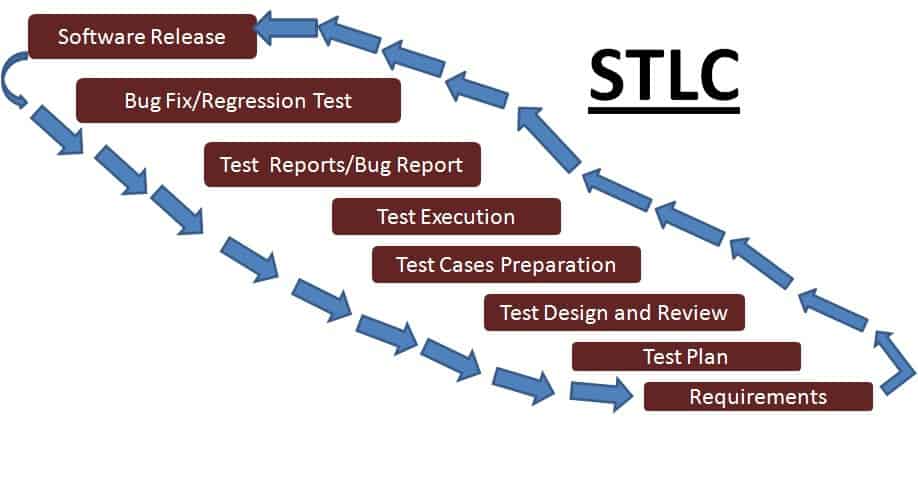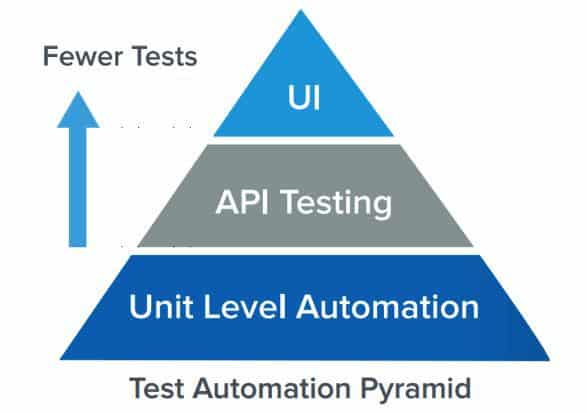Do you know why most startup software fails? Is it because of a lack of resources, exposure, skills, expertise, or capital?
Or is there another reason behind the failure of an app or software?
Actually, there is!
The prime reason behind the failure of an app is a poor or even absent software testing process during the app’s development.
Making mistakes during the development process, skipping a few steps, or leaving something unfixed during development can lead directly to an unsatisfactory user experience, which is not appreciated no matter how much effort you put in.
To avoid such issues, market influencers are adopting a software testing life cycle, and other major industries are already reaping the benefits.
According to a recent report by Zion Market Research, the global test automation market reached 15.87 billion USD in the year 2016 and is predicted to reach 54.98 billion USD by 2022. These stats should give you a fair idea about the hype surrounding test automation.
Considering the extravagance and intensive demand for advanced software testing strategies, various automated tools are put into operation to perform the execution of software testing. Earlier manual software testing procedures under the supervision of humans were performed, but automated testing has reduced the effort and along with it, records the test suite, which further helps in analyzing errors.
Relying on a suitable test automation platform can help you deliver superior quality output and bug-free products that your customers will simply love. If you want your business to outshine the competition, your focus should be on improving quality instead of adding more and more functionality to your software.
But before you make an investment in a testing platform, it’s important to be aware of some basic guidelines of the software testing sector.
Guidelines for Software Testing
To deliver high-quality services and flawless products, you need to implement quality assurance (QA) tools and methodologies. For startups, it’s essential to follow basic techniques and guidelines while carrying out a software testing process.
Here’s a list of the most proven tips and guidelines to follow during a software testing life cycle:
1. Plan the Complete QA Life Cycle
The test processes you’ll work with must be well-defined, planned, and thoughtfully documented. You need to emphasize documentation, as having good records will help you build efficient communication among your QA team. The QA life cycle includes a quality management plan, test strategy, test plan, and test cases.
2. Follow Test-Oriented Software Development Management
Implementing a test-oriented software development approach is the best method for improving product quality. It follows two major practices: test-driven development and pair programming. You can put these into practice with extreme programming (EX), a methodology that focuses on building a top-quality product while adapting to varying requirements.
3. Carry Out Formal Technical Reviews
A formal technical review (FTR) is a technique that identifies and reveals logical and functional errors at an early stage. The purpose of the FTR phase is to make sure that the product meets the predefined standards.
4. Implement User Acceptance Testing
Involving users in product development is a necessary step that can help you grab your target audience. To make sure that the product meets customer needs, you need to involve end-users in the testing life cycle. This can be done via user acceptance testing (UAT), which usually comes during the final stage of the development process.
Involving end-users will help you detect bugs that you wouldn’t have found normally. (For example, various users will test the software with a different mindset and vision and will check various aspects of the application, which obviously we can’t expect and which can be easily overlooked by a single user. In such processes, there is a probability to catch any left out bug or issue and get it resolved. This will let you move toward a perfect, ideal, and impeccable application.)
UAT can be performed in various ways, including alpha and beta testing, contract acceptance testing, regulation acceptance testing, operational testing, and black-box testing.
5. Healthy Communication With the QA Team
There is a wide set of activities involved in the testing process, and before you begin, you need to have a well-coordinated team that can perform the processes seamlessly. You must provide training and conduct brainstorming sessions prior to the testing phase so all team members can share and learn about the latest testing tools and techniques.
Moreover, you need to carry out regular communication with each team member to know what problems they frequently encounter and know the areas where they are lacking.
6. Use of Automated Testing
If you want to surprise your customers with flawless output, automated testing is the only thing that can take you to that level. As of now, two terms have gained the spotlight: test automation and adoption of agile methodologies.
Let’s have a look at these methodologies.
- Test Automation: It is a process used to automate repetitive tasks and other various testing tasks that are quite difficult to do manually. And automation testing is a technique where there is a comparison of actual outcome with the expected outcome, which is performed by writing scripts or using automation testing tools.
- Process: This process includes a pyramid testing strategy. There are basically three different levels. At the base there is unit level automation, then the service layer or API testing, and at the top user interface (UI) testing. The biggest percentage of test automation is performed at the base (unit level automation) as shown below.
- Assimilation of UI and API: Assimilation of UI and API testing makes the automation process easier by automatically implementing the API test case-level changes at the UI level. Working with these methodologies will help you identify and fix the bottlenecks at an early stage and help you make on-time deliveries while saving you time, effort, development costs, and resources.
- Agile Methodologies: Benefits of adopting agile methodologies in software testing:
- It saves money and time.
- It reduces documentation.
- It is flexible and adaptable to changes.
- It provides a way of receiving regular feedback from the end-user.
- It helps in the better determination of issues through daily meetings.)
7. Code Quality Measurements
In order to make your software testing life cycle a success, you must ensure that all the quality objectives are reviewed, verified, documented, and measured thoroughly.
And when we talk about quality code, there’s not a single tool that can verify the code quality; rather, there are seven major indicators that define the quality: reliability, efficiency, security, maintainability, rate of delivery, testability, and usability.
8. Effective Bug Reporting
If you have a badly written bug report (or no report at all), it is difficult to track the bugs and assign them to be fixed. You must maintain a bug report that clearly defines the bugs and the areas where there is a need for improvement.
(There is quite a difference between bug reporting and effective bug reporting. Some of the characteristics of effective bug reporting are as follows:
- Assign a bug number to each bug: A unique bug number must be assigned to each bug, which later will help you to identify and maintain a bug report.
- Make sure the bug is reproducible: If a bug is not reproducible, then it’s tough to resolve. That’s why a step-by-step process must be spelled out for how to reproduce, as well as fix, the bug.
- Be specific: Try to be specific about the issue. Avoid essay writing on a bug. To-the-point issues are easy to address and resolve.)
For this, you’ll need to sit down with the developers and other team members for regular meetings so that you don’t skip a single aspect of the development and testing process.
This will help you make sure all bugs are reported and any existing issues are fixed. Otherwise, you’ll end up skipping the bugs in the software, and there is a chance that you’ll launch the software with errors.
Over to You!
It’s high time that you emphasize your product quality and present flawless, unique output that grabs the customer’s attention. Otherwise, you’ll end up repeating the development phase and working on issues encountered by customers after the launch, and you’ll have to struggle with unhappy customers.


